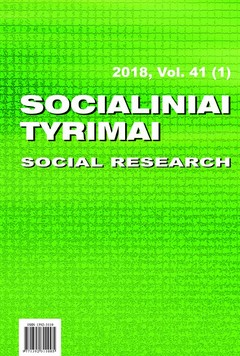Socialinio modelio vaidmuo didinant regiono konkurencingumą
The Role of the Social Model in Increasing Regional Competitiveness
Author(s): Raimundas Dužinskas, Giedrė Svirbutaitė-KrutkienėSubject(s): National Economy, Economic policy, Welfare systems, Comparative politics, Socio-Economic Research
Published by: Vilniaus Universiteto Leidykla
Keywords: social models; regional competitiveness; regional policy;
Summary/Abstract: Although the regional competitiveness is essentially related to its economic activity, there is an increasing consensus that competitiveness is best assessed in the context of regional business environment assets such as human capital, innovative capacity, local infrastructure quality, etc. (Huggins, Izushi, Prokop, Thopson, 2014). Thus, the regional competitiveness is not only economic indicators, it is increasingly based on creativity, knowledge and environmental conditions. Competitiveness is a multidimensional term, so soft variables need to be taken into account in order to understand, assess and strengthen regional activity and development. Therefore the purpose of this article is to determine the role of the social model to the increase of the regional competitiveness (Borozan, 2008). The aim of the article is to determine the role of the social model in increasing the competitiveness of the region. In order to achieve the goal, the following objectives are formulated: to analyze social models by identifying their characteristics; to assess the suitability of selected social models for the increase of regional competitiveness; to analyze and evaluate the regional policy in Lithuania. The main methods used are scientific literature analysis, statistical analysis, expert evaluation, descriptive analytical and comparative analysis.The first typology of welfare states models was presented by English political scientist R.Titmuss, who distinguishes three models – marginal (residual) model, which is found in United States and means that the main function of welfare providers lies with the market and family; industrial achievement performance model in Germany based on the level of industry in a country, where the welfare depends and is closely linked to work and productivity; and the institutional-redistributive model usually applied in Scandinavian countries, in which the provision of welfare depends on needs. Subsequently, Danish sociologist G.Esping-Andersen adjusted the classification of social models developed by R.Titmuss by adapting it more to the political science, thus identifying three welfare state regimes (models) - liberal, conservative-corporate and social-democratic (redistributive) (Aidukaitė, 2010). These three models differ in the aspects of the organization of social policy, their dependence on the market conditions, their ideology, priorities, the impact on the country’s stratification system, which means the division of society into social strata and the degree of decommodification, defining the person’s liberation from the need to work while maintaining the basic standards of life (material life conditions). Some states quite clearly reflect the typology of G. Esping-Andersen. For example, Germany is an example of a conservative-corporate model, Norway or Sweden is a social-democratic model, while a liberal model is typically found in Anglo-Saxon states. However, there are many states with certain characteristics that are inherent different kind of welfare systems (models). Therefore, in different scientific research the place in the typology of some countries differs because researchers tend to emphasize a particular feature or characteristic that determines the assignment of a state to different types. This article proves, that in order to review the diversity of the whole world, three models are not enough. Given that none of these models do not exist in a pure form. Taking this into account, the main attempts to extend or to adjust the essentially considered as traditional typology by E. Esping-Andersen are presented in this article. Most of such attempts are limited to extending the typology by inserting a fourth or several additional types (models), for example, southern model, Latin region model, European Union model, post-communist states model, etc. As mentioned before, there is a large variety of social models in the world, although only three are considered as main models – liberal (in Anglo-Saxon countries), conservative (in Scandinavian countries) and social-democratic (originating from Germany).
Journal: Socialiniai tyrimai
- Issue Year: 41/2018
- Issue No: 1
- Page Range: 56-67
- Page Count: 12
- Language: Lithuanian

